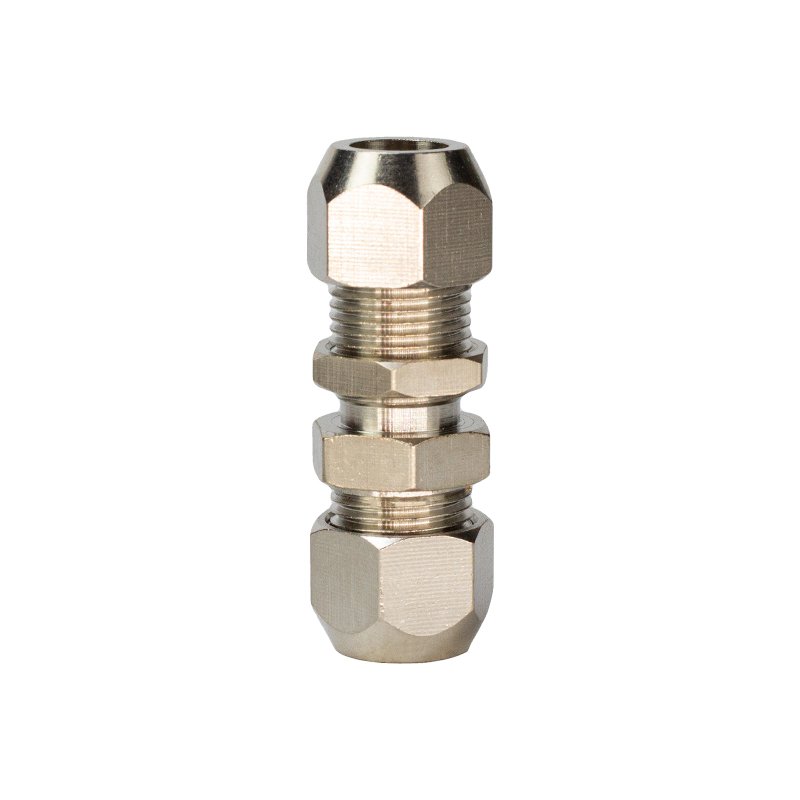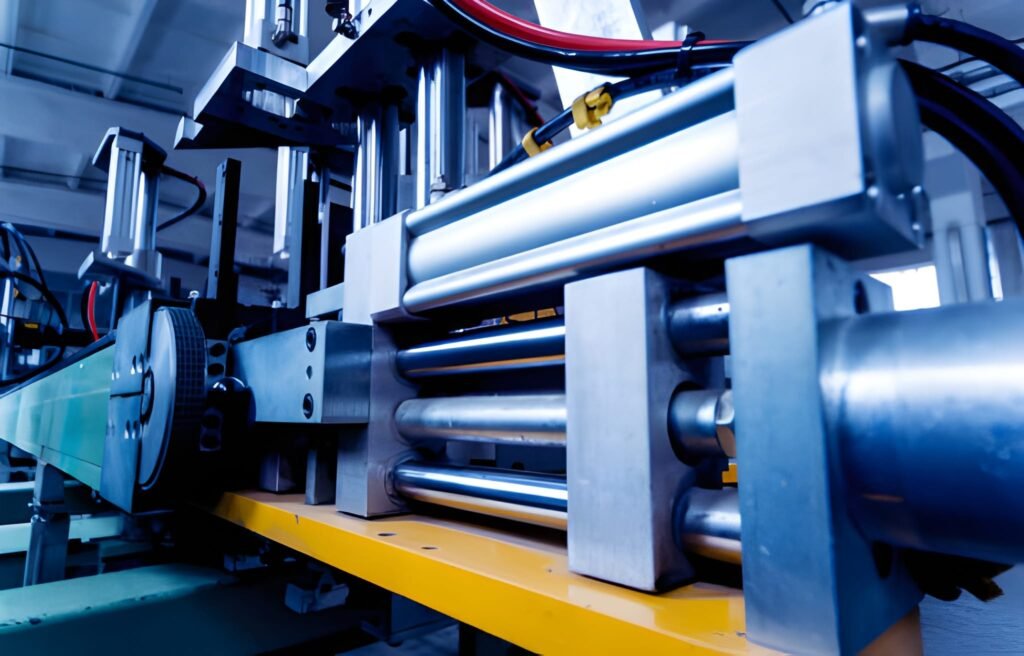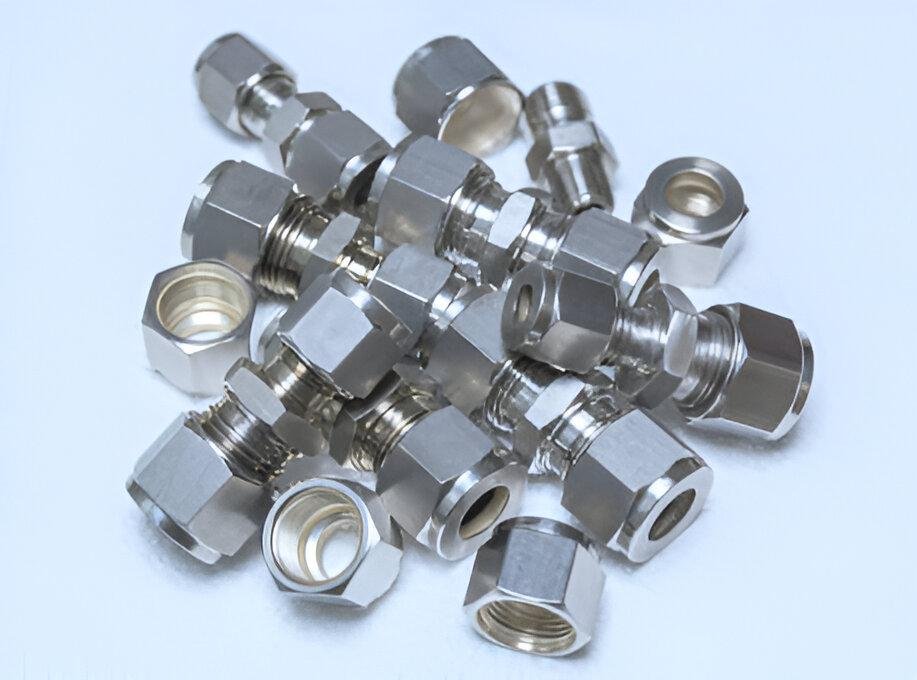What is an air pressure reducing valve?
An air pressure reducing valve is a mechanical device used to control gas pressure. Its main function is to convert high-pressure gas to a set lower pressure and keep this pressure relatively stable to adapt to various industrial and commercial applications. need. This type of valve is usually installed in compressed air systems or other gas delivery systems to ensure that downstream equipment can operate at safe and efficient working pressures.
The air pressure reducing valve works through an adjustable spring-loaded mechanism. When the gas pressure passing through the valve exceeds the set value, the valve automatically opens to release part of the gas, thereby reducing the overpressure. On the contrary, when a pressure lower than the set value is detected, the valve will close or reduce the opening degree to reduce the release of gas and thereby maintain the required pressure level. In this way, the air pressure reducing valve effectively controls the pressure of the gas flow, protects downstream equipment from damage from pressure fluctuations, and improves the overall efficiency and safety of the system.

Working principle and importance of air pressure reducing valve
Working principle of air pressure reducing valve
The working principle of the air pressure reducing valve is based on pressure balance and fluid dynamics. The interior of the valve body usually contains a piston or diaphragm, which is a moving component that responds to changes in the pressure of the gas flowing through the valve. Here is its basic workflow:
- High-pressure side input: High-pressure gas enters the valve from the supply line.
- Pressure Sensing: Inlet pressure acts on a diaphragm or piston against a preset spring pressure or low pressure gas on the other side.
- Pressure regulation: When the inlet pressure is higher than the set value, the diaphragm or piston moves, causing a part of the gas to be released and the pressure to drop. On the contrary, if the inlet pressure is lower than the set value, the spring pushes the diaphragm or piston back, reducing the amount of gas outflow and causing the pressure to rise.
- Stable output: By constantly adjusting the position of the diaphragm or piston, the pressure reducing valve ensures that the pressure of the output gas remains within the set range to achieve stable output.
The importance of air pressure reducing valve
Air pressure reducing valves are critical to industrial and commercial applications in several ways:
- Equipment protection: Many precision equipment and instruments require stable and precise operating pressure. Too high or too low pressure may cause equipment damage or performance degradation. Air pressure reducing valves ensure that these devices receive constant and appropriate pressure.
- Safety: High-pressure gases may cause explosions or other safety incidents if not properly controlled. Air pressure reducing valves reduce safety risks by controlling pressure.
- Energy Saving: By reducing the waste of energy, air pressure reducing valves help improve the energy efficiency of the entire system. Proper pressure settings can reduce energy consumption and operating costs.
- Operational efficiency: In many processes, correct gas pressure is key to ensuring product quality and production efficiency. Air pressure reducing valves help achieve efficient and continuous production processes by stabilizing pressure.
Main components and uses of air pressure reducing valve
Main components of air pressure reducing valve
- Valve body: The valve body is the main part of the air pressure reducing valve, usually made of metal or plastic, and is used to accommodate and connect other components.
- Valve core: The valve core is a key component for controlling gas flow, usually a piston or diaphragm, which regulates the outlet pressure according to changes in inlet pressure.
- Adjustment spring: The adjustment spring is used to provide the reaction force of the valve core to help maintain the set outlet pressure. Its elastic characteristics determine the adjustment range and accuracy of the pressure reducing valve.
- Adjusting screw: The adjusting screw is used to adjust the pre-pressure of the spring, thereby changing the opening pressure range of the valve.
The purpose of air pressure reducing valve
- Compressed air system: In the compressed air system, the air pressure reducing valve is used to reduce the pressure of high-pressure gas to a pressure range suitable for the operation of various equipment and tools to ensure equipment safety and work efficiency.
- Pneumatic control system: In pneumatic control systems, air pressure reducing valves are used to control the working pressure of pneumatic actuators and other pneumatic equipment to ensure the stability and accuracy of the system.
- Hydraulic system: In some hydraulic systems, air pressure reducing valves can be used to control the air pressure in the hydraulic device to ensure the stability and safety of the hydraulic system.
- Gas delivery system: In various gas delivery systems, air pressure reducing valves are used to control gas flow and pressure to adapt to different process requirements and equipment needs.
- Laboratory and scientific applications: In laboratories and scientific research fields, air pressure reducing valves are often used to control gas supply to ensure the accuracy and stability of the experimental process.

Advantages and Disadvantages of Air Pressure Reducing Valve
Advantages of air pressure reducing valve
- Stability: The air pressure reducing valve can stably control the pressure of the output gas to ensure that the system operates within the set pressure range.
- Safety: By reducing or stabilizing gas pressure, air pressure reducing valves help prevent safety issues such as equipment overloading, damage, or system explosions.
- Wide Applicability: Air pressure reducing valves can be used in various gas systems and industrial applications, including compressed air systems, pneumatic control systems, hydraulic systems, etc.
- Easy to adjust: Air pressure reducing valves usually have an adjustable design, and users can adjust the output pressure as needed to adapt to different application scenarios.
- Energy Saving: By reducing unnecessary pressure and energy waste, air pressure reducing valves help improve system energy efficiency and reduce energy consumption and operating costs.
Disadvantages of air pressure reducing valves
- Price: High-quality air pressure reducing valves are usually more expensive, which may increase the investment cost of the system.
- Pressure fluctuations: In some cases, air pressure reducing valves may cause slight fluctuations in output pressure, especially when load changes are large or the valve is aging.
- Maintenance needs: Air pressure reducing valves require regular maintenance, including cleaning, lubrication and inspection, to ensure proper operation and long-term reliability.
- Limitations: Some air pressure reducing valves may have limited pressure adjustment ranges or restricted applicable environmental conditions, limiting their use in specific applications.
- May cause malfunction: If the air pressure reducing valve is improperly designed or installed, it may cause inaccurate pressure control or even malfunction, affecting the normal operation of the system.
How to adjust the air pressure reducing valve?
Adjusting the air pressure reducing valve is a key step to ensure normal operation of the system and stable output pressure. The following are the basic steps for adjusting an air pressure reducing valve under normal circumstances:
1. Preparation:
- Make sure the system is shut down and pressure has been relieved.
- Check the air pressure reducing valve and its surrounding piping and connections for damage or leaks.
2. Determine the adjustment direction: Most air pressure reducing valves have an adjustment knob or screw for adjusting the output pressure. Confirm the direction of rotation of the knob to increase or decrease pressure.
3. Set the initial pressure: Use a pressure gauge or other pressure detection equipment to measure the current output pressure and write it down as the initial value.
4. Adjust the output pressure:
- Turn the adjustment knob or screw in steps to increase or decrease pressure. Generally speaking, turning clockwise increases pressure and turning counterclockwise decreases pressure.
- Adjustments should be made slowly and carefully, making only small adjustments at a time, and then waiting for a period of time for the system to stabilize before making the next adjustment.
- Adjust to the desired output pressure value based on actual needs and system requirements.
5. Verify pressure: After the adjustment is completed, use a pressure gauge or other pressure detection equipment to measure the output pressure again to ensure that the required set value is reached.
6. Fixed setting: If necessary, a locking device or locking screw can be used to fix the adjustment knob or screw in the set position to prevent accidental movement or adjustment.
7. Monitoring and adjustment: Regularly monitor the output pressure of the system and adjust the air pressure reducing valve as needed to ensure continued and stable operation of the system.
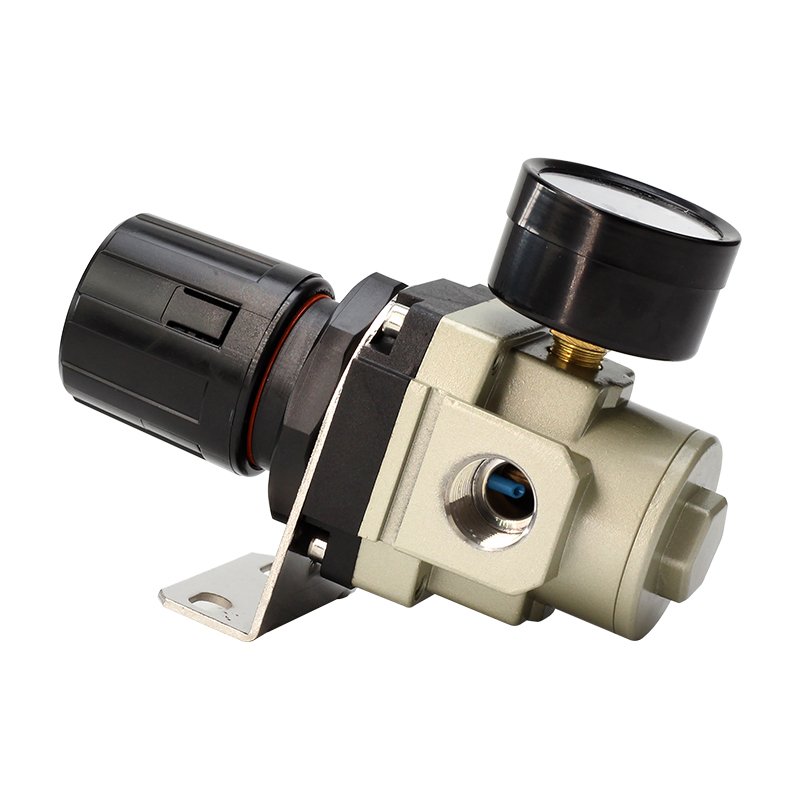
Analyze the applicable scenarios of different types of pressure reducing valves
Different types of pressure reducing valves are suitable for different scenarios. Depending on the application requirements and working environment, choosing the appropriate type of pressure reducing valve can improve system efficiency and safety. The following is an analysis of several common pressure reducing valve types and their applicable scenarios:
1. Direct-acting pressure reducing valve:
- Working principle: The direct-acting pressure reducing valve uses a piston or diaphragm to directly adjust the valve opening to achieve pressure regulation.
- Applicable scenarios: Suitable for small systems or scenarios with low pressure requirements, such as low-pressure gas pipelines, household gas pipelines, etc. The price is relatively low and simple and easy to use.
2. Pilot-operated pressure reducing valve:
- Working principle: The pilot-operated pressure reducing valve adds an auxiliary valve core to the main valve core. The auxiliary valve core controls the movement of the main valve core, improving the adjustment accuracy and response speed.
- Applicable scenarios: Suitable for scenarios with high pressure requirements or rapid response, such as precision instruments, pneumatic control systems, high-pressure gas pipelines, etc.
3. Proportional pressure reducing valve:
- Working principle: The proportional pressure reducing valve is controlled electronically or hydraulically to adjust the opening of the valve according to the input signal to achieve continuous and precise pressure regulation.
- Applicable scenarios: Suitable for scenarios that require precise pressure control, such as laboratory instruments, automated production lines, medical equipment, etc., and can provide higher adjustment accuracy and stability.
4. Master-slave pressure reducing valve:
- Working principle: The master-slave pressure reducing valve is composed of a main valve and an auxiliary valve. The main valve is used to adjust the pressure, and the auxiliary valve is used to control the action of the main valve to improve the stability and response speed of the system.
- Applicable scenarios: Suitable for industrial automation systems that require high precision and stability, such as CNC machine tools, electronic manufacturing equipment, etc.
5. High-precision pressure reducing valve:
- Working principle: High-precision pressure reducing valve adopts precise design and manufacturing process to provide higher adjustment accuracy and stability.
- Applicable scenarios: It is suitable for special scenarios with extremely high pressure requirements, such as precision instruments, laboratory research, aerospace and other fields, and can provide extremely high pressure control accuracy and stability.
Air pressure reducing valve installation steps
Installing an air pressure reducing valve is an important step to ensure proper system operation and stable pressure. The following are the basic steps for installing an air pressure reducing valve under normal circumstances:
1. Choose the right location:
- Based on the system design and piping layout, select a suitable location to install the pressure reducing valve.
- Make sure the chosen location is close enough to the compressor or gas source for easy installation and maintenance, and also consider space for draining and servicing the pressure reducing valve.
2. Shut down the system: Before proceeding with installation, ensure that the system is shut down and close all valves related to the system to relieve pressure.
3. Clean the pipes: Use a clean cloth or gas pipe cleaner to clean the pipe surface around the installation location to ensure there is no oil, debris or other dirt.
4. Installation preparation:
- Select appropriate pipe joints and seals according to the specifications and installation requirements of the pressure reducing valve.
- Have the necessary tools ready, such as wrenches, wrench sets, etc.
5. Install the pressure reducing valve:
- Place the pressure reducing valve in the selected location and connect it to the gas pipeline using pipe joints and seals according to the pressure reducing valve installation guide.
- Make sure the connections are tight to avoid air leakage or loosening.
6. Connect the pipes: If necessary, connect the air inlet and outlet of the pressure reducing valve to the corresponding pipes of the system to ensure that the connections are correct and tight.
7. Adjust settings: Adjust the output pressure of the pressure reducing valve according to the system requirements and design pressure, and use a pressure gauge or other pressure detection equipment to verify.
8. Testing and Inspection:
- Open the main valve of the system and use a pressure gauge to detect the pressure of the system to ensure that the pressure reducing valve is working properly and outputting stable pressure.
- Check all connections for leaks and make necessary adjustments and corrections.
9. Mark and record: If necessary, mark the pressure value and installation date on the pressure reducing valve and pipes for future maintenance and inspection.
10. Complete the installation: Ensure that all steps have been completed, the system is operating normally, and relevant records are saved in the maintenance record.
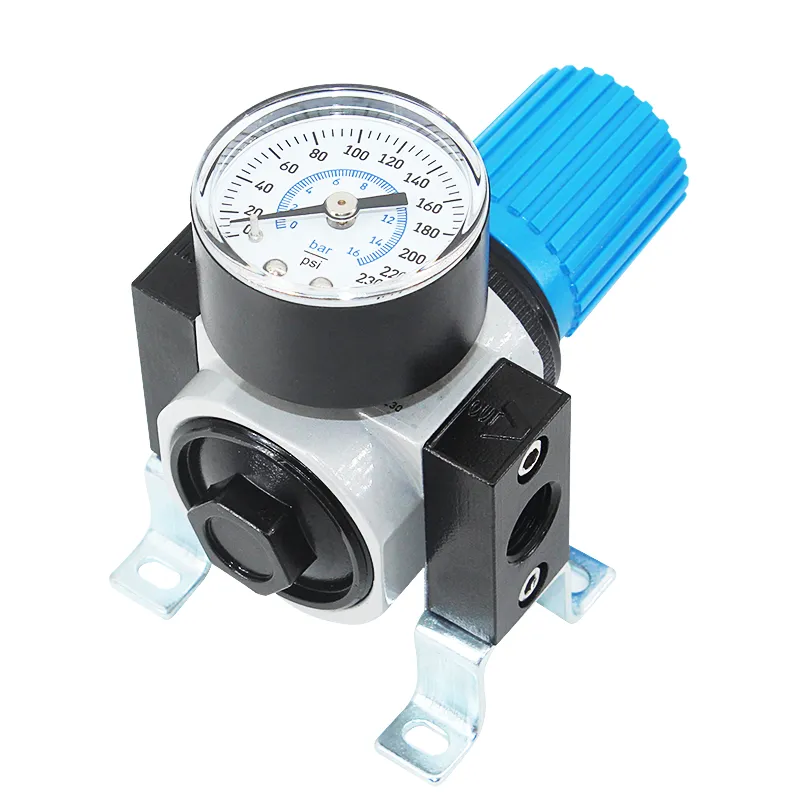
Routine maintenance and troubleshooting of air pressure reducing valve
Performing routine maintenance and timely troubleshooting is critical to keeping your air pressure reducing valve operating properly. Here are some common routine maintenance and troubleshooting steps:
Routine maintenance
- Regular cleaning: Use a clean cloth or soft brush to clean the surface of the pressure reducing valve and the surrounding pipes to ensure that it is free of dust, oil and debris.
- Check for leaks: Check the pressure reducing valve and pipe connections regularly for leaks. If leaks are found, repair or replace the seals immediately.
- Lubrication: According to the manufacturer’s recommendations, regularly check the moving parts of the pressure reducing valve, such as the piston or diaphragm, to ensure they are moving freely and add the appropriate amount of lubricant as needed.
- Calibrate pressure: Use a pressure gauge regularly to check the output pressure of the pressure reducing valve. If it is found to be inconsistent with the set pressure, adjust or calibrate the pressure reducing valve in time.
Troubleshooting
- Unstable pressure: If the pressure output by the system is unstable, it may be caused by damaged or loose parts inside the pressure reducing valve. The damaged parts should be inspected and repaired or replaced in time.
- Leakage: If you find a leak in the pressure reducing valve or the pipes around it, you should first check whether the seals at the connection are loose or damaged. If there is no problem, consider replacing the seals or repairing the pipes.
- Valve stuck: If you find that the valve of the pressure reducing valve is stuck or cannot open and close normally, it may be caused by dirt or insufficient lubrication. The valve should be cleaned and an appropriate amount of lubricating oil should be added.
- Pressure adjustment failure: If it is found that the pressure reducing valve cannot adjust the output pressure or the adjustment accuracy decreases, it may be due to spring failure or damage to the adjustment mechanism, and the damaged parts should be replaced in time.
- Abnormal sound or vibration: If the pressure reducing valve makes abnormal sound or produces abnormal vibration, it may be caused by loose or worn parts, and should be checked and repaired in time.
- Other fault phenomena: According to the actual situation, perform timely maintenance or seek professional help to ensure the normal operation of the system.
Through regular daily maintenance and timely handling of faults, the long-term stable operation of the air pressure reducing valve can be ensured and system downtime and maintenance costs can be reduced.

